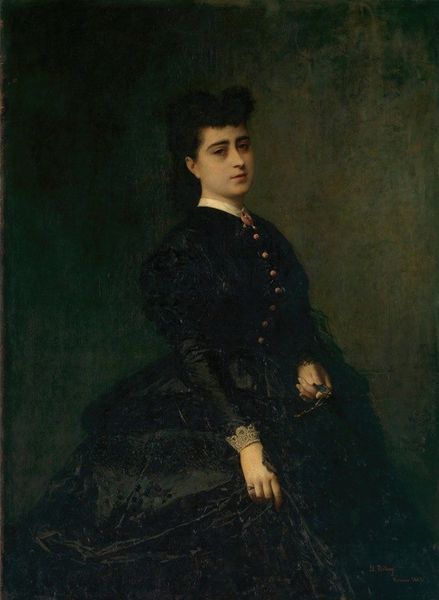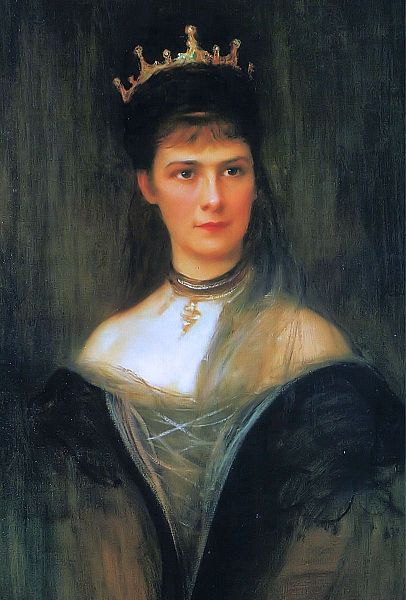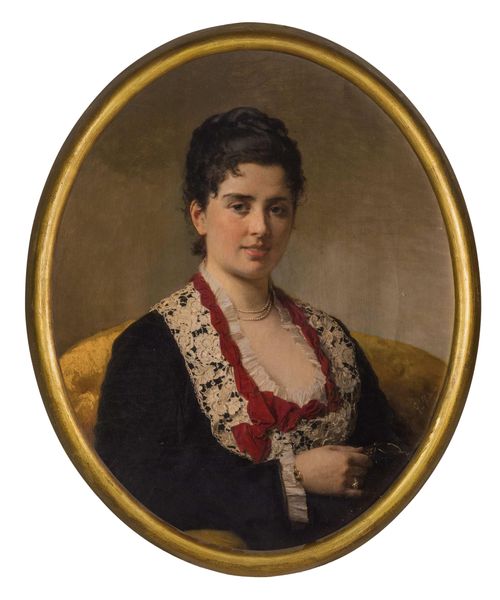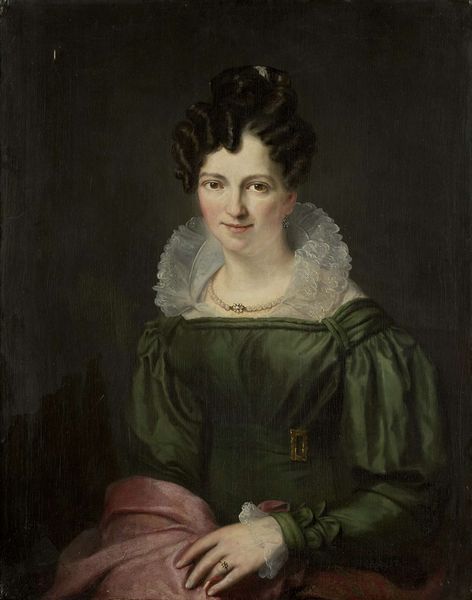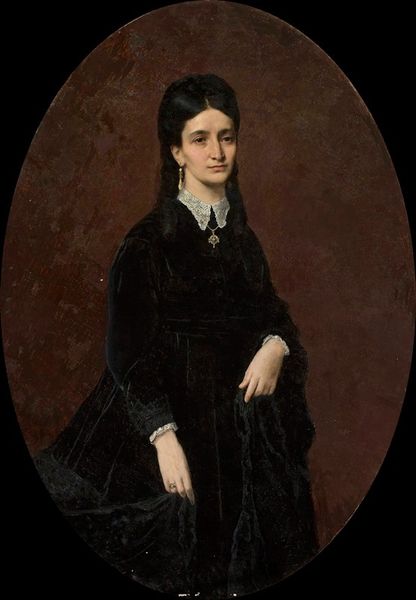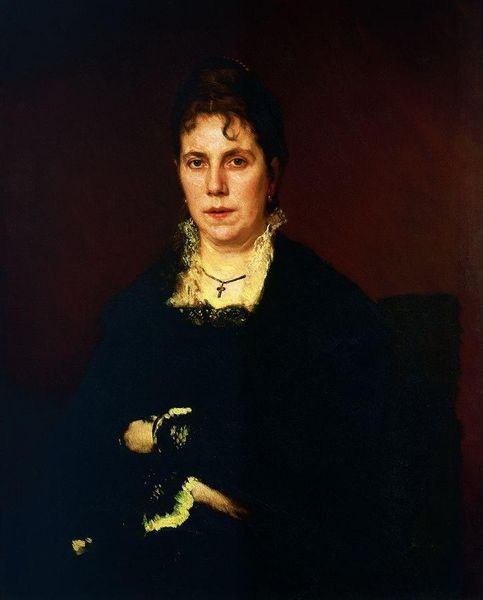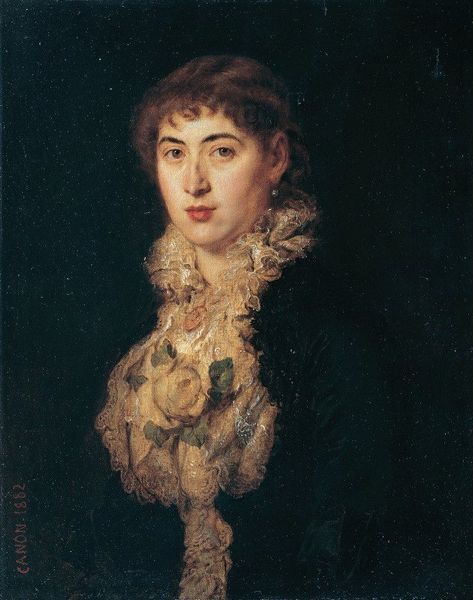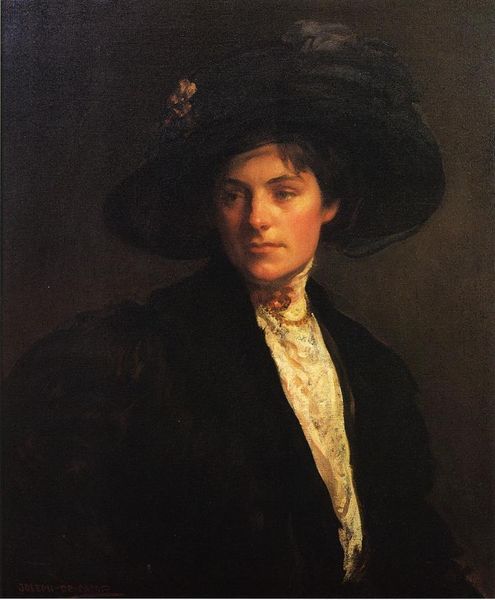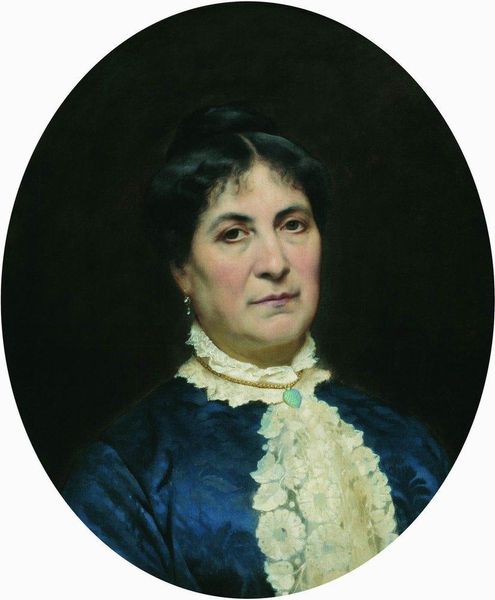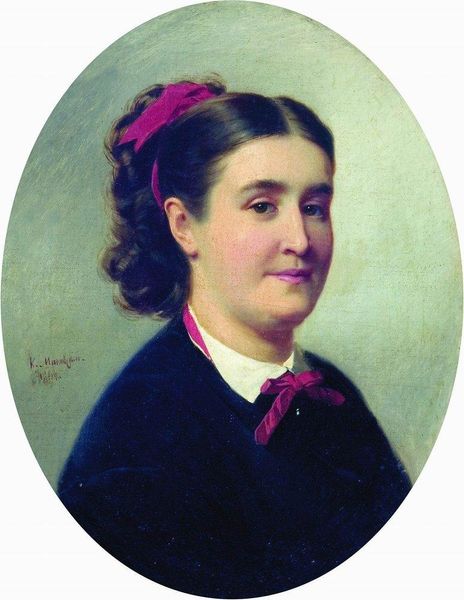
Copyright: Public domain
Curator: This is Fyodor Bronnikov's "Portrait of Elena Grigoriyevna Tolstaya", painted in 1874. What are your immediate thoughts? Editor: A melancholic stillness. The somber tones and her contained expression give the impression of someone holding a heavy weight, despite her social position. Curator: The deep reds and blacks certainly evoke a feeling of gravitas. Note how Bronnikov uses color to structure the composition, leading our eye from the patterned background to her dark velvet dress, contrasted by the small white lace collar. It's all quite strategic. Editor: Red, of course, signifies passion, power, even sacrifice. But subdued like this, muted, it reads as bottled emotion. The way her dark dress absorbs light is fascinating. It makes her presence almost ghostly, ethereal despite the heavy materiality of the velvet. And what about the red jewels, a concentrated drop of vitality in a sea of black? Curator: Those red ornaments do act as focal points, creating visual rhythm against the predominantly dark palette. Structurally, they echo the shapes in the patterned backdrop. Bronnikov masterfully balances form and content to convey Elena's societal role, don't you agree? Editor: Absolutely. Jewelry, lace—status symbols all meticulously rendered. But to me, the most compelling aspect remains the eyes. Direct, yet hinting at internal turmoil. There is some sort of subtle psychological drama at play beyond surface-level beauty. Curator: I appreciate your interpretation. Indeed, there's a captivating dialogue between her outward composure and an unspoken depth. That push-pull certainly makes this Romantic-era portrait resonate beyond its historical context. Editor: Exactly! Beyond skillful composition and historical symbolism, the portrait provides us a glance into the subject's internal world. A cultural record, perhaps. Curator: A fitting observation, providing a poignant insight to our discussion of Fyodor Bronnikov’s piece. Editor: Indeed, seeing how aesthetic elements work to evoke empathy deepens our relationship to the past.
Comments
No comments
Be the first to comment and join the conversation on the ultimate creative platform.

